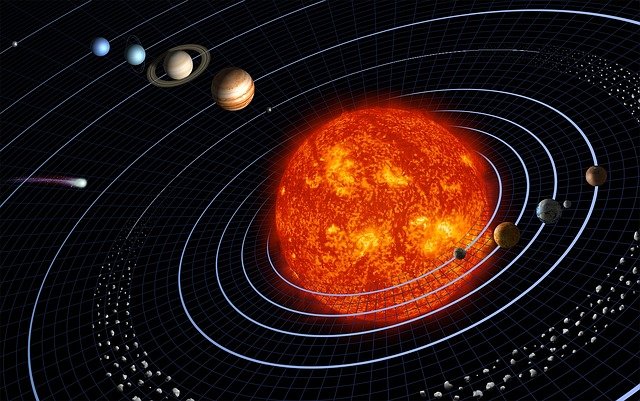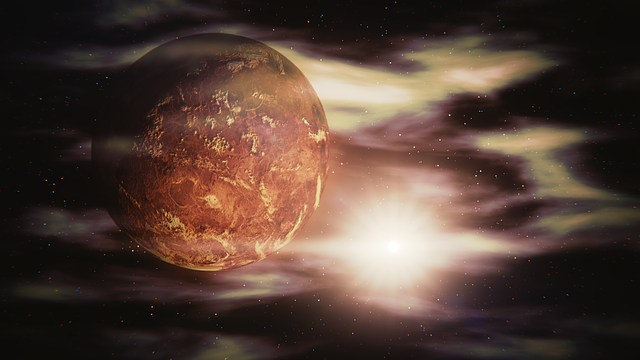*This post may contain affiliate links. This means we may make a commission if you purchase an item using one of our links*
Many planets in our solar system appear to orbit the Sun in perfect circles, but, strictly speaking, every planet in the solar system has an elliptical orbit, some of which are more eccentric than others. Dioramas – such as science fair projects – display the planets in a circular orbit. In reality, a planet’s mass, velocity, and gravity would need to interact just the right way to make this happen.
Discover why the planets in our solar system orbit the Sun in elliptical patterns and why some of these paths are more drastic than others.
Why Are The Orbits Of A Planet Not Perfectly Circular?
Table of Contents

The majority of astronomical objects orbit something larger than themselves; the moon is orbiting Earth, the Earth is orbiting the Sun, and the Sun is orbiting the galactic center. Almost all of these objects orbit a central mass on an elliptical plane, which means the distance between the two varies depending on the stage of the orbit.
The perihelion is the point of an orbit during which an object reaches its closest point to the central body. On the other hand, the aphelion describes the point of orbit when the two objects are furthest from one another.
For example, Earth travels at an average distance of 93 million miles from the Sun. During perihelion, it moves as close as 91.4 million miles; during aphelion, the gap widens to over 94.5 million miles. And the difference between these two figures can help us to calculate the eccentricity of a planet’s orbit.
Perfectly circular orbits are rare because they require a perfect balance between the orbiting body’s velocity, mass, and distance from the central object and the star’s (or other celestial body’s) gravitational influence.
Even in these circumstances, the perfect orbit would not last long. Any slight change in mass or disturbance from passing bodies would create enough instability to upset the balance and change the course of the orbit.
Why Do Some Planets Have A Very Drastic Elliptical Orbit?
The eccentricity of an orbit describes the degree to which a planet’s path of travel deviates from a perfect circle. In simple terms, the higher the eccentricity, the less circular the orbit is. A planet with a perfectly circular orbit has an eccentricity of 0. In contrast, an eccentricity of 1 means that the planet travels on a parabolic trajectory (more than one is a hyperbolic trajectory).
Every observed planet to date has an eccentricity of less than 1, and most of the planets in our solar system have low eccentricities, meaning their orbits do not deviate far from a circular path. In fact, every planet except Mercury has an eccentricity of less than 0.1.
Mercury has a higher eccentricity of 0.21 because it is the closest planet to the Sun. The gravity of this vast star affects the orbit of a planet and can cause the rotational speed to increase or decrease depending on what stage of orbit the planet is at. Planets travel fastest at perihelion but slow down at the aphelion stage of their orbit.
At its closest point, Mercury is just 29 million miles from the Sun, but this distance stretches to 43 million miles during aphelion.
The only other “planet” in the solar system with an eccentric orbit is Pluto. This dwarf planet is so far from the Sun that its orbit is prone to destabilization. Its orbit is so eccentric that it spends 20 of its 248-year journey around the Sun within the orbit of Neptune.
Still, its resonance with Neptune helps keep the orbit path regular for millions of years. This resonance means that the two planets are locked into an orbital pattern where every two orbits of Neptune equals three orbits of Pluto. Scientists took away Pluto’s status as a planet when it failed to meet the criteria for clearing debris from its path.
But Pluto is a fascinating little world that does what it wants to do. Who knows, our distant descendants could one day witness Pluto hurtle toward the Sun or fly out into the stars.
What Planet Has The Most Circular Orbit?

The image of a solar system in which the planets orbit their central star in a tidy set of concentric rings is nice. Still, the chances of a perfectly circular orbit are slim, which is why the vast majority of planets in our Universe (not just the Milky Way) orbit their star via an elliptical path.
If a planet has a circular orbit, it has one central focus point around which it rotates. If a planet has an elliptical orbit, it travels along a symmetrical closed oval path. The path of an ellipse is constructed around two points, known as foci.
The majority of planets in the solar system have a reasonably circular orbit, as demonstrated in the table below:
| Planet | Orbit Eccentricity |
| Mercury | 0.206 |
| Venus | 0.007 |
| Earth | 0.017 |
| Mars | 0.093 |
| Jupiter | 0.048 |
| Saturn | 0.056 |
| Uranus | 0.047 |
| Neptune | 0.009 |
Earth’s eccentricity is 0.017, meaning it is very close to circular, and the elliptical shape would be hard to define with the naked eye.
The planet with the most circular orbit is Venus, which has an eccentricity of 0.007.
Summary
For a planet’s orbit to be perfectly circular, the balance between gravity, mass, and velocity must balance exactly. On rare occasions that this occurs, its instability means small environmental changes easily alter the course.
Every planet in our solar system has an elliptical orbit, but most are low eccentricity, meaning they look very much like circles to the naked eye.
References
Elliptical or Circular: What Is the Shape of a Planet’s Orbit? (wondriumdaily.com)
Orbital Eccentricity: Why Do Planets Travel In Elliptical Path? (scienceabc.com)
Mercury: A Planet of Extremes (wondriumdaily.com)
Here’s Why Pluto Has a Weird Orbit | Latest Science News and Articles | Discovery

